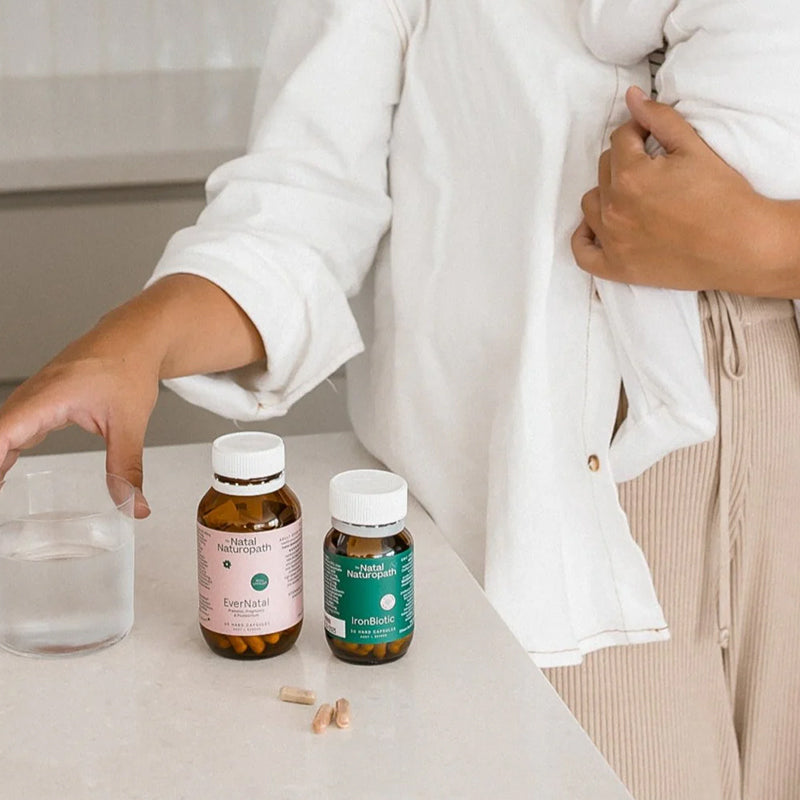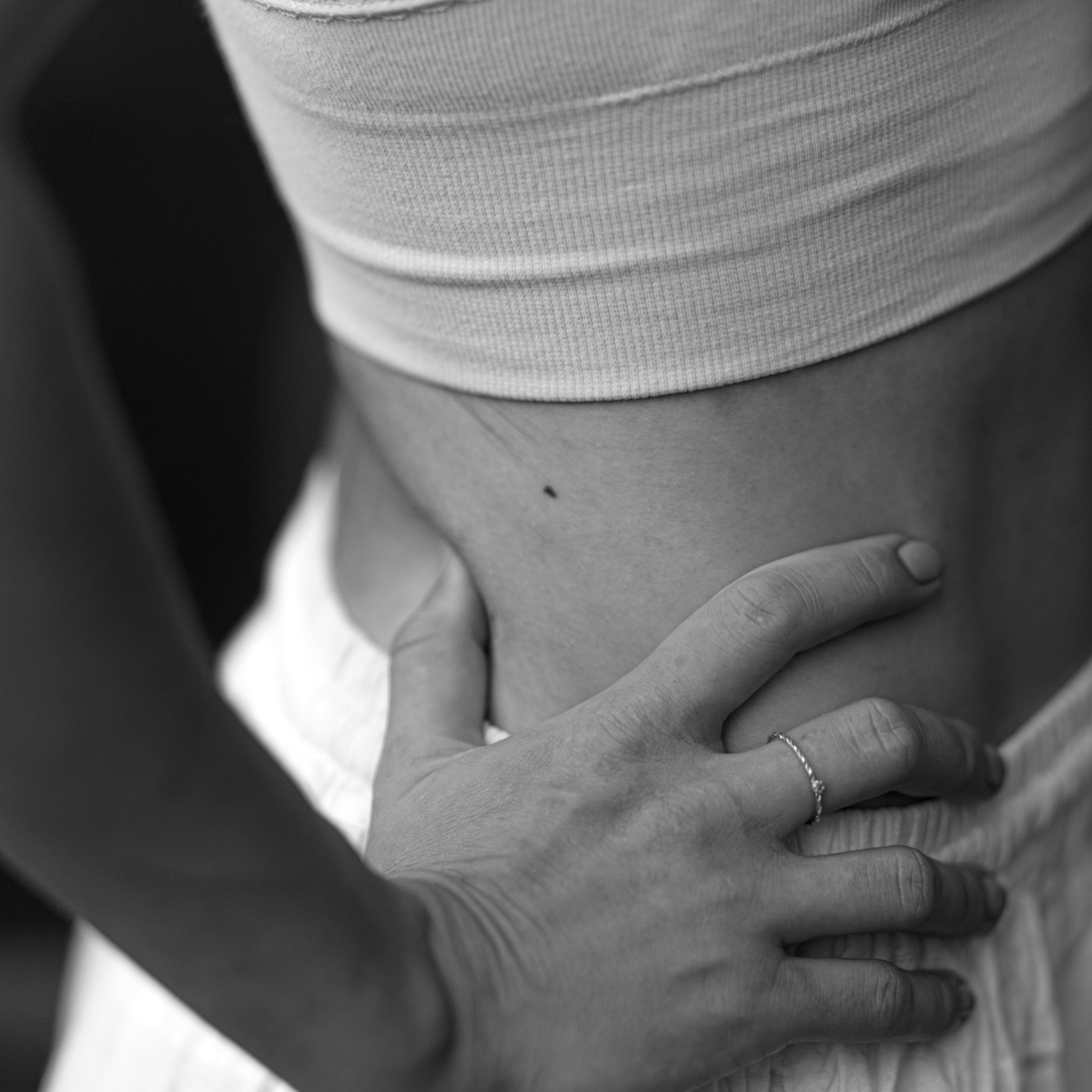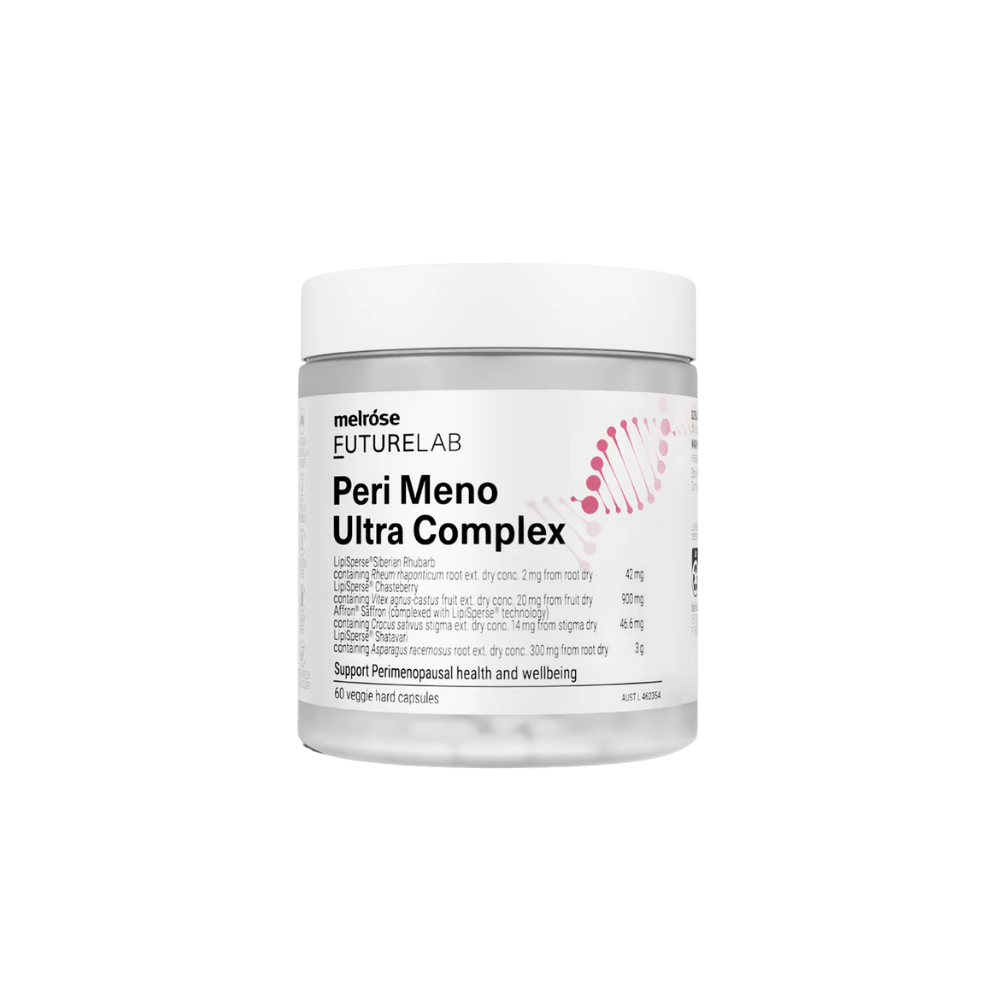During menopause, many women notice changes in body shape, particularly around the midsection. One of the most common shifts is the appearance of a small pocket of fat low on the abdomen, sometimes referred to as the "meno-pouch." While often seen as a frustrating side effect, it’s worth exploring why this happens and how it may even serve a helpful role during this transitional time.
Why Does Menopausal Belly Fat Develop?
Menopause brings significant hormonal changes, most notably a decline in oestrogen. This hormonal shift influences how and where the body stores fat. Before menopause, fat is more likely to be stored in the hips and thighs. As oestrogen decreases, fat is redistributed towards the abdomen.
This redistribution is compounded by other age-related changes:
-
Reduced insulin sensitivity: Making fat storage more likely.
-
Slower metabolism: The body burns fewer calories at rest.
-
Decreased muscle mass: Which also lowers metabolic rate.
While abdominal fat in excess can negatively impact metabolic and cardiovascular health, a small, soft layer of belly fat is not inherently harmful. In fact, it may offer certain benefits during the menopausal transition.
Is the Meno-Pouch Ever Helpful?
Some research suggests that fat tissue produces hormones and adipokines which may help maintain bone mineral density after menopause. Additionally, as the ovaries stop producing oestrogen, fat tissue becomes a secondary source, potentially easing symptoms and supporting muscle and bone health.
Rather than waging war against your body, it can be empowering to focus on achieving a healthy, sustainable balance. No bootcamps. No crash diets. Just real, nourishing steps that support your body’s needs in this new phase. Lets see how that might look;
1. Prioritise Protein
Protein helps maintain and build muscle, which in turn supports a healthier metabolism. Think of it as building strength from the inside out and keeping you energised, stable, and supported. Focus on:
- Poultry, fish, and lean meats
- Eggs and Greek yoghurt
- Legumes, lentils, tofu, and tempeh
- Nuts and seeds
2. Eat Fibre-Rich Foods
Fibre is your gut’s best friend! It stabilises blood sugar, supports digestion, and helps with satiety. Plus, a healthy gut supports hormone balance. Include:
- Leafy greens and a variety of vegetables
- Whole grains like oats, quinoa, and spelt
- Fruits such as berries, apples, and pears
- Beans, lentils, and chickpeas
3. Include Healthy Fats
Good fats don’t make you fat - they make you resilient. They help with hormone production, reduce inflammation, and keep you satisfied. Stock up on:
- Avocados
- Fatty fish (like salmon and sardines)
- Nuts, seeds, and olive oil
4. Stay Hydrated
Your body thrives when hydrated. Water supports metabolism, eases bloating, and helps with fat breakdown. Simple but mighty.
Aim for at least 2 litres of filtered water daily. Herbal teas are a great addition too!
5. Manage Stress Levels
Stress isn’t just in your head - it actually lives in your body too. Elevated cortisol encourages belly fat storage and disrupts hormone balance. Whether it’s breathwork, journaling, walking in nature or just saying no more often, managing stress is essential.
6. Move Regularly
You don’t have to run marathons. Movement should feel good! It should help you feel alive in your body, not at war with it. So find a form of movement that works for you and your body.
- Strength training boosts muscle mass and metabolism
- Cardiovascular activities support overall fat loss and heart health
- Gentle movement like walking, yoga, or Pilates can reduce stress and support mobility
7. Support Gut Health
Your gut isn’t just about digestion - it’s deeply connected to mood, immunity, and hormones.
Keep it happy with:
- Fermented foods (sauerkraut, kimchi, kefir, yoghurt)
- Probiotic-rich supplements
- A diverse, fibre-rich diet
8. Embrace Body Acceptance
Your body has carried you this far! It deserves kindness, not criticism. Menopause is not a personal failure or a flaw to fix. It's a natural, wise phase of life.
Focus on what your body can do, not just how it looks. Let grace and self-compassion be your guide
In Summary
Yes, hormonal changes during menopause can lead to more belly fat, but it’s not all bad news. Some of these changes may even support your transition!
The key is to nourish your body with what it needs most: steady blood sugar, strong muscles, balanced hormones, and a calm nervous system. With small, sustainable shifts, you can support a healthy equilibrium that works for your unique body - meno-pouch and all.
This isn’t about fixing your body, it’s about supporting it, respecting it, and walking through menopause with strength and self-trust.
Need a Bit More Support?
If you're feeling overwhelmed or unsure where to start, working with a qualified naturopath can offer individualised support for managing menopause symptoms. From tailored nutrition plans to herbal medicine and lifestyle guidance, a naturopath can help you feel more at home in your body again.
You're not alone, and you don’t have to navigate this transition without support.
Find your perfect practitioner here
Or book a naturopath consultation here to begin your personalised journey.
BONUS: Free Menopause-Friendly Recipe
One easy way to start implementing everything we've covered here is through food - because nourishment is the foundation! This hormone-supportive miso salmon bowl brings together many of the ingredients discussed above in one satisfying, balanced meal. Think protein, healthy fats, fibre, and fermented foods.. all working together to support metabolism, gut health, and hormone balance during menopause.
Hormone-Supportive Miso Salmon Bowl
This nourishing bowl is designed with menopause in mind~ balancing blood sugar, reducing inflammation, and supporting gut health and hormone production. It’s also delicious and easy to prepare.
Ingredients (Serves 2):
- 2 wild salmon fillets
- 1 tbsp white miso paste
- 1 tbsp tamari or coconut aminos
- 1 tsp sesame oil
- 1 tsp grated fresh ginger
- 1 garlic clove, minced
- 1 cup cooked quinoa or brown rice
- 1 cup steamed broccoli
- 1 cup shredded red cabbage
- 1 small avocado, sliced
- 1 tbsp sauerkraut or kimchi
- 1 tsp sesame seeds (optional)
- Juice of ½ lemon or lime
- Handful of fresh coriander or parsley (optional)
To serve:
- Drizzle of olive oil or tahini dressing
- Extra fermented vegetables, if desired
Instructions:
- Marinate the salmon: In a small bowl, mix miso paste, tamari, sesame oil, ginger, and garlic. Spread over salmon and let marinate for 15–30 minutes (optional but ideal for flavour).
- Cook the salmon: Grill or bake at 180°C (350°F) for 12–15 minutes, or until cooked through.
- Assemble the bowl: In each bowl, layer quinoa or brown rice, steamed broccoli, red cabbage, and avocado.
- Top with the cooked salmon, sauerkraut or kimchi, sesame seeds, and herbs.
- Drizzle with lemon juice and olive oil or your favourite tahini dressing.
This meal checks every box discussed in this post: it's rich in protein and healthy fats, packed with fibre, and supports your gut, metabolism, and hormones - all while being deeply satisfying and easy to digest.






